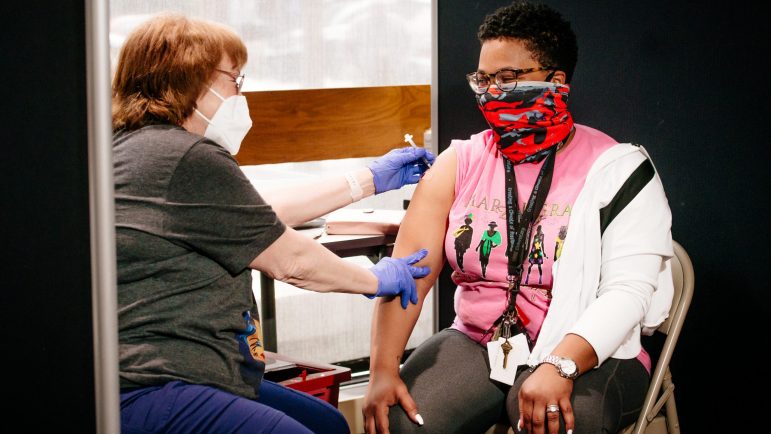With more than enough supply to go around, Alabama health officials are urging more residents to get vaccinated against COVID-19. About 30% of Alabamians have received at least one shot of a COVID vaccine, but demand has declined in recent weeks, leaving thousands of unused doses sitting on shelves.
“The people who really wanted to have vaccine as quickly as they could get it, most of those people have been able to get it,” State Health Officer Dr. Scott Harris said during a media call Friday. “Now we’re left with people who maybe have problems of access, maybe they just need more information. So we continue to put that information out there.”
Harris said a federally-run mass vaccination clinic at Bessemer’s Watermark Place is only giving out about 120 shots a day, far below its capacity to deliver up to 1,000 doses daily.
According to officials with UAB Health System, demand at their four community vaccination sites in Birmingham has dropped by 78% in recent weeks.
Harris said people are hesitant to get the vaccine for many reasons, but the biggest problem is that some residents believe the vaccine is more dangerous than COVID-19.
“It’s simply not true,” Harris said.
To reach more people, the state health department is running television and radio ads, as well as limited door to door visits, stressing the “tangible benefits” of vaccination. Harris said vaccines are widely available in every county and the state will soon launch “public health teams” to offer vaccination to residents in rural communities, who may face additional barriers like transportation and taking time off work.
“We want people to be vaccinated because this is how we get back to normal,” Harris said. “This is how we can get to the point where we don’t have to wear masks and we don’t have to worry about distancing and we don’t have to worry about crowds.”
Last week, there was a 1% increase in the number of positive COVID-19 tests, but Harris said in general, cases, hospitalizations and deaths due to COVID-19 have declined to levels not seen since the beginning of the pandemic.

